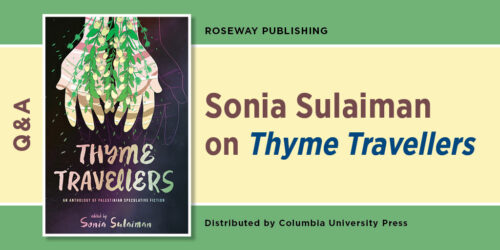Jewish Terrorism in Israel
The recent arrest of Yaakov Teitel for allegedly carrying out a series of domestic acts of terror in Israel is a reminder of the persistent existence of Jewish terrorism.
The accusations against Teitel include placing a pipe bomb near Professor Zeev Sternhell’s Jerusalem home in September of 2008; sending a parcel bomb to a messianic family residing in Ariel, which resulted in a 15-year-old boy suffering severe injuries; and the 1997 murder of a Palestinian shepherd south of Mount Hebron.
The history of Jewish terrorism is of course the subject of Ami Pedahzur and Arie Perliger’s new book Jewish Terrorism in Israel. One of the episodes recounted in the book is the assassination of Yitzhak Rabin.
In the chapter, the authors describe the radicalization of Yigal Amir and how the plot was hatched by him and other Jewish extremists. Below is an excerpt from the chapter and you can read the entire chapter here.
Several months after they began plotting, the Amir brothers decided to share their secret with Dror Adani. Yigal Amir and Dror Adani had met when they studied together at the Kerem D’Yavne Yeshiva, and they became close while serving in the IDF. In 1993, Yigal brought Adani home to introduce him to his sister. Although nothing ever developed between the two, Adani and the two brothers continued to see each other. They spent many hours in a small shed behind the nursery school run by the brothers’ mother and developed a common philosophy regarding the steps that were necessary to halt the Oslo process. The constant interaction between the three intensified their militancy, and after a short while they decided to act on two separate fronts. On one hand, they would try to kill Prime Minister Rabin, and on the other they would act against Palestinian police officers and civilians. Their objective was to precipitate a crisis between Israel and the Palestinian Authority that was grave enough to stop the peace process….
At the same time, Yigal Amir tried to secure the rabbinical authorization for killing the prime minister. How successful was he? The question remains unanswered, although most signs indicate that he received a positive response. Some figures in the religious Zionist camp claim that although the issue was debated, not one rabbi was found who would approve the assassination. Other prominent figures from this camp, such as Rabbi Yoel Ben-Nun, insisted that Amir did receive authorization. Moreover, in his testimony to the police immediately after the assassination, Amir himself declared that he would never have taken on the assassination without rabbinical approval and without being sure that more people were behind him. Whatever the answer is, there is little doubt that the debate in the rabbinical circles of the religious Zionist stream regarding the application of din rodef and din moser to Rabin, and the fact that at least some rabbis did not reject the use of these terms in describing Rabin’s policy, had an important role in persuading Amir that the blood of the prime minister was not only on his own head. As he himself declared during his trial, “I acted according to din rodef. . . . It was not a personal act, I just wanted him to be removed from his position. If he would have remained paralyzed, it would have been the same for me….”
Apart from the reverberating shock felt after the Rabin assassination, the act marked a historic watershed for Jewish terrorism in Israel for two reasons. First, the assassination was carried out by a network of anonymous young people who belonged neither to any known terrorist group nor to the two most important ideological and sociopolitical organizational frameworks of the Israeli radical right: the Gush Emunim and Kahanist movements. Second, in contrast to Jewish terrorists who in the past had avoided direct challenges to government institutions and political leadership, Amir’s network was completely alienated from Israeli democracy. Its members believed that the government of Israel was acting in diametric opposition to the interests of the people of Israel. A number of years later, this worldview was adopted by the hilltop youth and manifested in the terrorist activities of the Bat Ayin Underground.”


